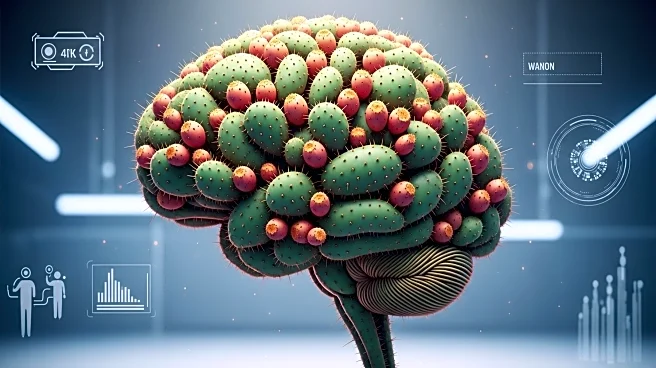What's Happening?
Researchers from ETH Zurich, the University of Zurich, and New York University have developed a novel ultrasound device capable of stimulating multiple precise points in the brain simultaneously. This advancement in non-invasive neuromodulation uses lower-intensity ultrasound pulses, reducing the risks of overheating and uncontrolled brain excitation. The device allows for the visualization of brain activity, providing a direct view of the networks being influenced. Initial tests have been conducted on mice, with the device positioned on the head to perform neuromodulation through the skull. This method, which does not require surgical intervention, could potentially open new avenues for treating neurological and psychiatric disorders such as Alzheimer's, epilepsy, tremors, Parkinson's, depression, and stroke.
Why It's Important?
The development of this ultrasound device represents a significant leap in the field of neuromodulation, offering a safer and more precise method to influence brain activity. By targeting multiple brain areas simultaneously, the device aligns with the brain's network-based operation, potentially enhancing the efficacy of treatments for various neurological conditions. This technology could revolutionize the approach to managing diseases that currently have limited treatment options, providing new hope for patients and healthcare providers. The ability to visualize brain activity in real-time also offers researchers a powerful tool for understanding brain function and the effects of neuromodulation.
What's Next?
The researchers plan to focus on applications and test the technology in various animal models of brain diseases. Future studies will aim to refine the device's capabilities and explore its therapeutic potential for conditions like Alzheimer's, epilepsy, and Parkinson's. As the research progresses, securing funding will be crucial, especially given the current political pressures on the United States National Institutes of Health, which initially financed the study. The researchers are seeking alternative funding sources to continue their work and eventually transition to human trials once the technology is proven safe and effective in animal models.
Beyond the Headlines
This breakthrough in ultrasound technology not only holds promise for medical applications but also raises ethical and regulatory considerations. The ability to non-invasively modulate brain activity could lead to new discussions about the ethical use of such technology, particularly in terms of privacy and consent. Additionally, the development of this device highlights the importance of international collaboration in scientific research, as the project involved expertise from multiple institutions across different countries.










